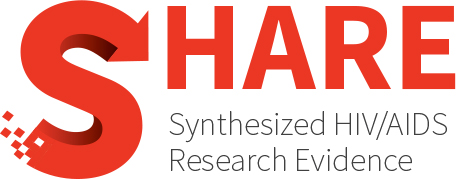Category Archives: Treatment
HIV infection and antiretroviral therapy impair liver function in people living with HIV: Systematic review and meta-analysis
Background: The use of antiretroviral therapy (ART) has improved the lives of people living with HIV (PLWH). However, its use is associated with secondary complications, notably hepatotoxicity. This systematic review and...
The association between HIV infection and carotid intima-media thickness in the era of antiretroviral therapy: A meta-analysis
Atherosclerosis remains a leading cause of mortality globally, and this is worse in people living with HIV (PLHIV). While the administration of antiretroviral therapy (ART) in this population has significant...
Estimating the effect of maternal viral load on perinatal and postnatal HIV transmission: A systematic review and meta-analysis
Background Although a growing body of evidence supports zero risk of sexual HIV transmission from a person with sustained virological suppression, known as U=U (undetectable equals untransmittable), data have been...
Retention in HIV care among Southeast Asian people living with HIV: A systematic review and meta-analysis
Background Despite the effectiveness of antiretroviral therapy (ART) in reducing HIV-related morbidity and mortality, the retention of HIV care remains suboptimal in Southeast Asia. Objective This systematic review and meta-analysis...
Aging and HIV: Recent findings in contributing factors
Background: Aging among people living with HIV (PLWH) presents multifaceted challenges influenced by antiretroviral therapy (ART), chronic inflammation, viral coinfections, stigma, multimorbidity, and immunosuppression. Methods: This review synthesizes recent research...
Evaluating HIV drug resistance in the Middle East and North Africa and its associated factors: A systematic review
OBJECTIVE: One of the obstacles to achieving successful treatment of HIV infections is the development and spread of mutations linked to resistance. Thus, it is important to monitor the prevalence...
Family influences on antiretroviral therapy adherence in youth with HIV in the United States: A systematic review
HIV poses a significant issue in the United States and understanding how HIV-positive populations adhere to treatments, specifically with antiretroviral therapy (ART), is vital for researchers to find approaches to...
Depression and associated factors among human immunodeficiency virus-positive pregnant women in sub-Saharan Africa: Systematic review and meta-analysis
BACKGROUND: Despite its severe impact on both maternal and fetal health, antenatal depression has not received as much attention in the healthcare community as postnatal depression. Comprehensive evidence is very...
Improving communication: A narrative synthesis of interventions for HIV disclosure to pediatric populations
PURPOSE OF REVIEW: HIV remains a significant global public health concern, affecting millions worldwide, including children. Disclosure of HIV status to infected children holds several benefits, yet rates of disclosure...
